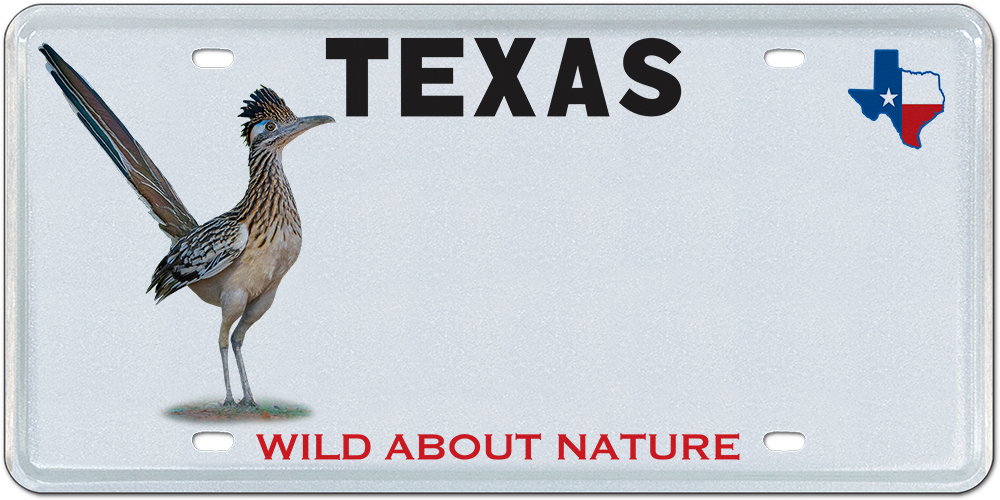
The latest Texas Parks and Wildlife conservation license plate is a bright picture of a Texas greater roadrunner, tail and crest standing to attention.
The plate is the 12th in the TPWD Conservation Plate Program.
The colorful nature license plates, most will say, are a welcome change from the drab black-and-white regular plates the state requires of all motorists.
“The greater roadrunner is an iconic image for Texans that can be seen in every county of the state and is one of the toughest birds around — it’s even known for eating rattlesnakes,” said Shelly Plante, TPWD’s nature tourism manager. “It’s also one of the few birds people recognize and remember the first time they see it, given its unique profile — all of which makes it the perfect symbol for Texas wildlife viewing and nature tourism.”
The TPWD plates do more than brighten the day out on the highways. Funding from sales of the conservation plates helps support and expand programs like the
Great Texas Wildlife Trails, Texas Paddling Trails and Great Texas Birding Classic.
So far the TPWD Conservation Plate Program has raised $10.5 million in the last 22 years for wildlife and habitat conservation in Texas, according to program marketing lead, Janis Johnson.
The 11 conservation plate designs already available include a horned lizard, large-mouth bass, hummingbird, white-tailed deer, bluebonnet and desert bighorn sheep, among others.
Cost of the conservation specialty plates is $30 a year, and $22 goes to supporting various nature programs. Plates can be purchased for cars and trucks, RVs and travel trailers, regular trailers and motorcycles.
The plate cost is in addition to the annual registration fee paid to the county tax assessor-collector.
Texas wildlife photographer Hector Astorga took the photo used on the plate and generously donated the image. In 2020, Astorga was named one of the “We Will Not Be Tamed” ambassadors for the Texas Parks and Wildlife Foundation.
“Wildlife photography opens people’s eyes to what we need to protect,” Astorga said. “That leads to conservation and preserving the habitat that these wild creatures need to survive.”
As lovely as the plate is, one still can’t help thinking TPWD missed an opportunity.
Under the tag number is the phrase, “Wild About Nature.”
Surely it should have read, “Beep! Beep!”



